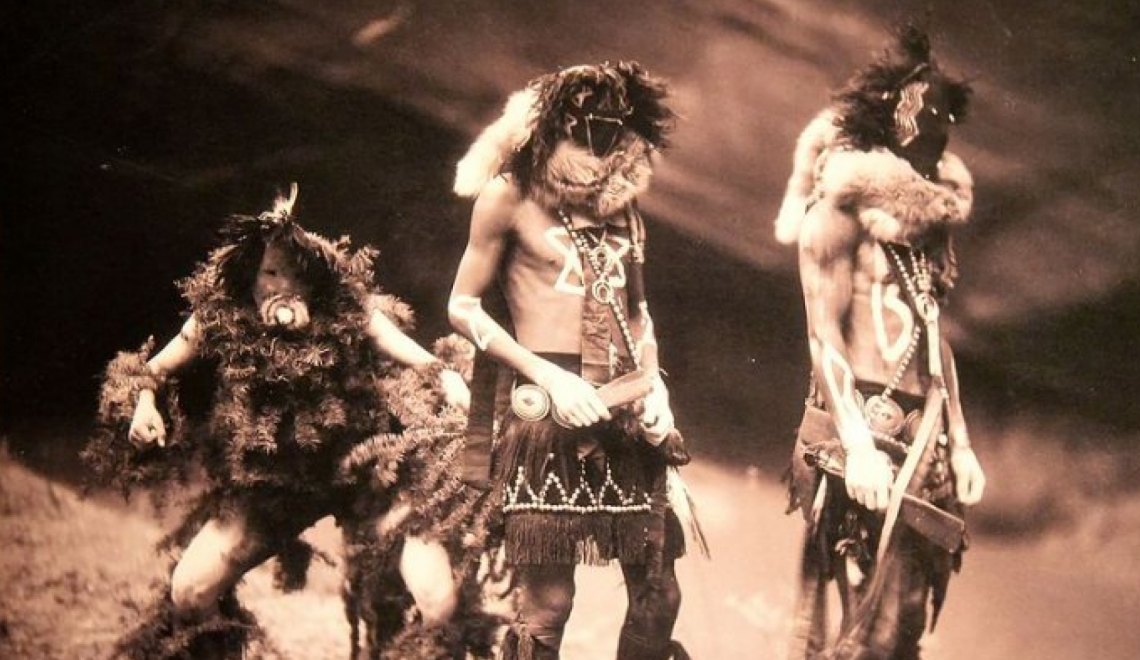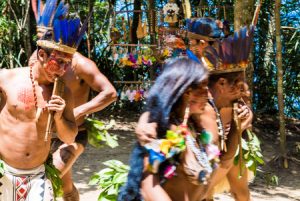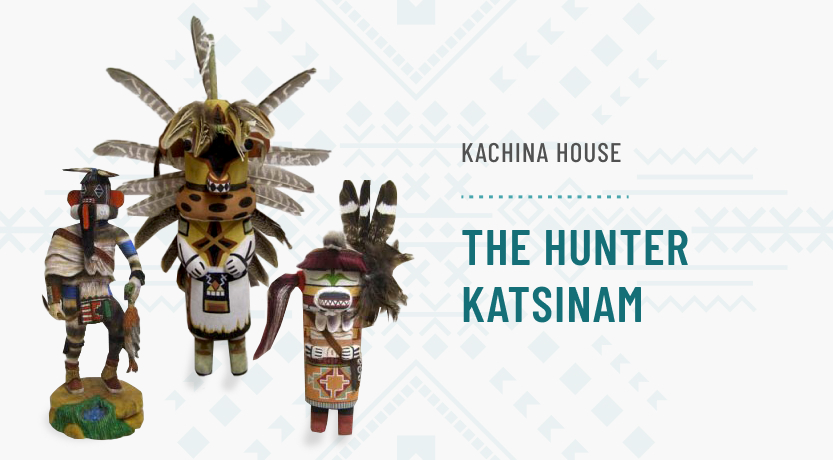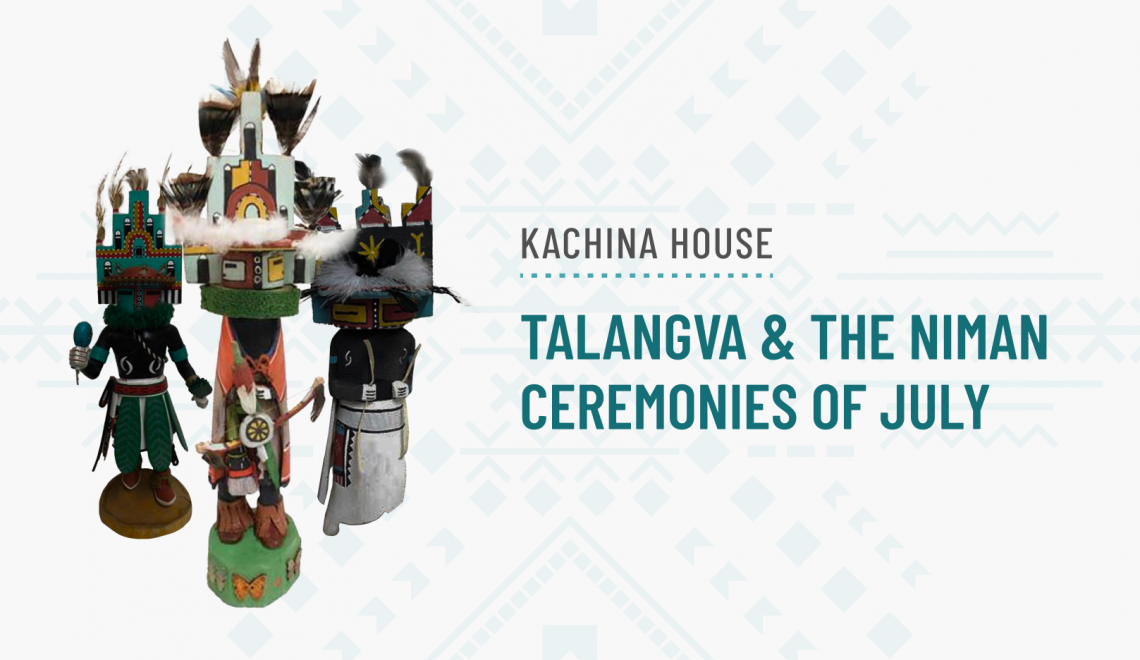
Skinwalkers are feared among Native Americans. Navajo Yebichai dancers.
Photo Credit: Edward S. Curtis. USA, 1900, Wellcome Trust – Public Domain
Updated Jan 2024
When people hear the word, “shapeshifter,” they may think of supernatural figures like witches and werewolves. But the spiritual practice of shapeshifting travels well beyond a mythical and supernatural scope.
What is Shapeshifting?
A non-Native study of shapeshifting posits that the practice was used by medicine people and shamans to transform into part animal to cause harm and destruction rather than good by shooting pieces of bone into their victims, much like a witch would.
Tribes such as the Navajo, however, talk about a more positive role shapeshifting plays in the formation of Native American culture. Often referring to the practice as “skinwalking,” shapeshifters transform into the bodies of bears, wolves, and eagles for the purpose of healing and protecting their communities.
7 Fast Facts About Native American Shapeshifting
- Often referred to as “skin walking,” shapeshifting is a deeply rooted concept in Native American folklore.
- In Native American culture, shapeshifting represents the mystical transformation of a human into an animal form.
- The practice of shapeshifting encourages the shedding of ego, promoting a fluid, shapeless state of being.
- Shapeshifting is not limited to select individuals; it is an ability that anyone can potentially access.
- Unlike a spirit animal, which guides us on our journey, shapeshifting involves a transformative experience, mentally shifting from human to animal form.
- Native American shapeshifting often occurs during cultural practices like songs, dances, war ceremonies, and hunting rituals.
- Dance is the most common medium for shapeshifting, symbolizing the physical change from human to animal form.
When does Shapeshifting Occur?
Shapeshifting trains our egos to let go and become shapeless so that we can take on the qualities of our chosen animal. This process occurs during Native American songs, dances, war ceremonies, and hunting rituals and takes great nimbleness.
The most common form of shapeshifting happens through dance. The dancers dress in feathers and animal pelts to activate the divine animal spirit in their movements. Instead of moving as the eagle would, the dancer is the eagle, propelling himself in short bursts of momentum and hurling their arms in controlled, swinging movements. This ritualistic dance engages their core, mind, and heart in an out-of-body experience where physical human limits presented by the everyday world do not exist.
In hunting, the shapeshifter is associated with cunning, courage, loyalty, and strength. They are central figures in both Zunis and Shoshone mythology and are clan animals for tribes like the Cherokee and Chippewa. The wolf and Native Americans were closely linked during the time of the early settlers, so much so that they would often kill the Native Americans, in the same way, they would the wolf. Native Americans learned the ways of the wolf to improve upon survival techniques and to outwit their enemies.
People who can correctly shapeshift come in touch with their instincts. They can appreciate the spirit of our ancestors and the spirit in all livings things. Understand the world through a Native American perspective at Kachina House, where our showpieces tell a story of their own!





Last night me and my man were having a talk as I had lied about something of grate importance to him and to me he was very quite and I locked my eyes without blinking for several minutes and I saw his face change many times in to completely different men all old souls and the end face I saw was him but his skin was young his eyes young no marks on his face . I said to him about what I saw and he said not many ppl can see this . He is part native and a very deep person . I just wanted to know more about this , he said it will all make sence and our energise will balance out one day
Hi Nicola….you are lucky that the man you are with chose to stay with you after such a transgression on your part. I would be truthful as I went forward and walk the path of life with him by your side. You were fortunate enough to see the many souls this man has with him in this lifetime, these souls will teach and guide both of you. There are many resources you can reference to learn more about past lives and the lives between lives….much is on the internet and there is much in print. It need not be just Native American based lore. The spirits come through all of us. est of luck in your journey.
I’d like to know how to get in touch with my inner animal or at least find out what it is. Since I was little I’ve always found wolves fascinating and I’ve felt a part of me as a wolf. So often I feel the urge to howl and growl. I’m not sure why but it I growl a pot when I feel threatened or in danger. If you could help me figure this out it would be greatly appreciated. I am 25% Cherokee and 25% Soix I know I feel the Indian and I know I feel a wolf but I am confused as to why a wolf.
You might want to look at the Medicine Cards, and I am sure there are many individuals skilled in helping you see into your past lives and help discover if potentially you were a wolf in a past life and how to make friends with that being in this life. Wolves are teachers and pathfinders. Don’t feel confused that you are a wolf, embrace it and see what in the wolf is positive and can be helpful in your life.
I’m writing the sequel to a fictional novel I wrote some years back. I want to incorporate the Shoshone methodology in regards to rituals and stories of shapeshifting, but I want to properly represent. Would you have anyone that I may contact for indepth information on the subject?
I am sorry, we do not have any contacts with the Shoshone people. Best of luck in your search. You might try contacting the Shoshone Tribal Cultural Center at this website. http://easternshoshone.org/cultural-center.html
Maybe they can be of assistance.
Is there a shape shifter that drains energy from other people and can cause death because the persons energy is gone? I am trying to learn about shapeshifting
Indeed there is. It is named a Shadow Hunter…you can find out more in a book titled “Last Cry: Native American Prophesies and Tales of the End Times” by Robert Ghost Wolf
Last month I was walking back to my homeless camp and I did a wellness check on a homeless man. It was night time and I was with my man and my dog when this happened.The homeless man I did the wellness check on looked up at me and smiled and said “thank you so much for asking, I am fine” but as he was saying this his face changed from 3 different peoples faces that I knew and stayed on the one that must’ve been his real face that I didn’t know. I smiled and said “I am glad and if he needed anything at all to please come find me”. Out here in Tucson, I am kind to everyone and respect everything from the rock people to the tree people and all in between. He smiled and thanked me for the offer and would remember my kindness. I have not seen him again, but I was wondering what it meant when one shape shifter showed his faces to a person. I hope that that person is ok and is still out there being strong.
Maybe just other spirits, the ones that you knew, smiling at you and letting you know they are there with you and protecting you as you look after others. Should give you a wonderful feeling to know that spirits are looking out for you.
I was driving a semi on I80 through Wyoming and experienced something almost unbelievable. In the distance I saw what appeared to be an antelope racing from a field on the left side approaching the highway in mmy drive path. I gripped the wheel thinking I’m gonna hit it. Qs I was about to apply the brakes the animal did not even touch the shoulder yet almost transformed into an eagle and flew durectly upward. Completely avoiding crossing the path I was driving I am still unsure as to what I experienced. I still get the chills
I believe what you saw was a spirit at play. It knows that no one would believe you, and you are fortunate to have seen the being. Don’t let it give you the chills, instead ask why was I shown this? Is there something I should be doing? Am I the antelope heading for disaster and if I choose another path, will I become an eagle and soar??
I have found much evidence of shapeshifting belief from the stone tools that have been found. combinations of eagle and human, bear and human, deer and human. This culture existed at least 9000 years ago according to these tools and probably no doubt much longer.
Indeed, much longer ago than 9,000 years. There have been people here and cultures for as long as the earth has been here.
I’m bein attack by shape shifters and they do something at night to make me feel uncomfortable
You might try smudging yourself and your surroundings. Tell them they no longer need to stay there with you and that they are released from you. Ask only for love and light as you move the smudging smoke around your entire living space. Be sure to open EVERYTHING. All the doors and windows, cupboards and drawers. Smudge in every space. Repeat over and over that the spirits are released from being with you and they can move on. You only ask for love and light in your space and your life.
Hi my name is Nathan and over the past 10 years I’ve been experiencing wolf like abilities and wolf like craves like killing and blood I am native American and I wanted to know what was going on
you should try and find a Native American healer or Medicine Man in your area….see if someone could help you. It sounds like one of your guides might have turned into something much darker.
Is it possible to have a shapeshifter spirit guide I think I’ve seen one of mine as one
Anything is possible. Or it could be you have multiple guides….very hard to say.
Hi my names Grady obviously haha, look my whole life i have felt attached to wolves and i have had multiple episodes of feeling deep in my bones of a spiritual calling a need to be something bigger, something i can use to help people, i’m about 30% Cherokee btw, anyway I’ve heard stories of protectors, creatures half wolf and half man, some full wolf or animal that watch over the people that they care about and for some reason i feel that’s my calling i don’t know why. But i wouldn’t hesitate to do whatever i had to, to achieve it.
I would recommend that you find a Native American who is a medicine man or who could guide you on a quest to find your calling. Wolf is a powerful being and there is a reason you are feeling this. Keep your eyes open and let the wolves guide you.
You’re probably feeling that way because it’s a glimpse of your true potential. Keep your mind open and follow your heart. The world is in need of protectors right now.
I have a friend that in a six month period has come into contact with several owls. One fell from a tree and landed on his windshield and died while others would just stare at him for hours. To one he thought he accidentally hit only to find it was fine and flew right over him. For several years he has felt like someone was always watching him. Now he is suddenly becoming upset and angry for no reason.I’m not sure if these events are tied together or not but we are concerned. Any recommendations or thoughts on this would help.
Owls can mean many things. In some cases, wisdom and control of the night. A silent hunter….in others, harbingers of death. It depends on what your friends beliefs are…It is frightening to have wildlife continue to appear in your life and they want to communicate with you, but you are not sure what the message is. That is probably why he is becoming upset and angry….there is a great book called Animal Speak….maybe get a copy, that might help.
I had a vision of a wolf as a small child and it came to my room to protect me. When I was older I had a dream of turning into a wolf to protect a woman from a man about to hurt her. I’ve seen a child run by my car and turn into a raven. I also dreamt about an old man that giggled & turned into a pea pod.
Since I was 12 I have experienced many dream and waking states of ancient humans and various animals that come to me. My mom is from the eclectic cultural mix from Taos New Mexico (spanish and native). I look white. Yet I always dream in copper or brown colors of peoples and in languages that seem to link mostly with Native American Tribes. Most ‘healers’ or animals that visit seem to be of healing qualities. Some are worried and trying to tell me something. Yet I have experienced and even my husband experienced a woman presence of deep darkness who screaches and has tried to take the breath from my husband. We experienced that together. Currently I have 4 hawks who have been around my home. They keep calling and I feel they are calling me. I feel alone because I am white skinned but my soul has always experienced another world.
I’ve had different dreams where I turn into a cat. The feeling in the dream is that it’s a large cat, not a housecat. In these dreams I’ve been either running from something, climbing a hill, running along side a road etc. I start running or climbing faster and faster. The next thing you know my paws/claws are digging into the earth in front of me and propelling me forward. The feeling in the dream is so intense. The feeling of power, freedom and absolute euphoria. When I dig? into the earth and propel my body forward I can feel the weight of me I can tell I’m a big cat. I wish this could happen in real life lol. Any thoughts?
I am from Bosnia and I’m not sure what how our culture would describe some of these abilities, but I have been told I am a shapeshifter. I am however afraid of this notion. No one has really been able to clearly explain it to me so far. I hide this from people as it seems to frighten them. And I do not wish to do anyone harm! Ever! Would love more information.
Many years ago I took a nap on the couch and instead of going to sleep I vibrated downward, it felt like, then popped into a warm desert scene. I was flying through the sky and about 50 – 75 feet above the ground. It was wonderful and the warm air flowing over my arms and face felt incredible. It was as real as anything I have ever experienced. As I flew along the desert canyon I looked all around enjoying the scenery, then I looked down and saw my shadow. It was the shadow of a large bird. Unprepared, I gasped in shock and that shock popped me right out of the scene. I vibrated back up and out, unable to return, although I definitely tried. I have long sought to return there and feel it was an ancient part of me that has continued to spur my lifelong spiritual pursuit.
I have been told that my great grandmother was the daughter of a Cherokee Chief. I’ve had several dreams feeling the wind on my arms and being able to see a mile or so from the ski, and as I looked out at my arms they were feathers of a large bird. I saw my reflection I the water and I had the face and the body of a Hawk. I went to my powwows for yrs in search of a shaman or medicine man who could explain my dreams? I had no intention of going to this powwow but went anyway at the request of a friend. There I met with this Medicine Man and shared my Dreams with him, then he touched my chest and said that I was living a lie as a white man. I told him that I could heal people but that I wanted to fight all the time, he laughed and said that I was a healer, and a Cherokee, shapeshifter, naturally a born hunter/ fighter explaining my need to fight! I spent time in the USMC overseas in the jungle and was right at home there until I met another human being and then all hell broke loose! It has been difficult to transition back to humanity! I still don’t belong anywhere, and pray to my Forefathers to show me the way home!